Effective Bed Bug Repellents: A Comprehensive Guide
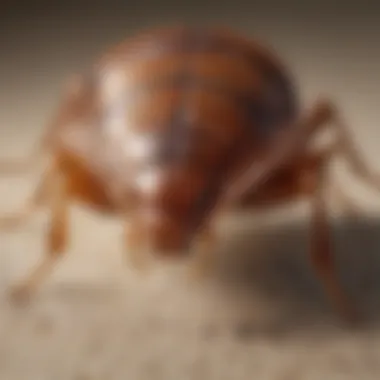
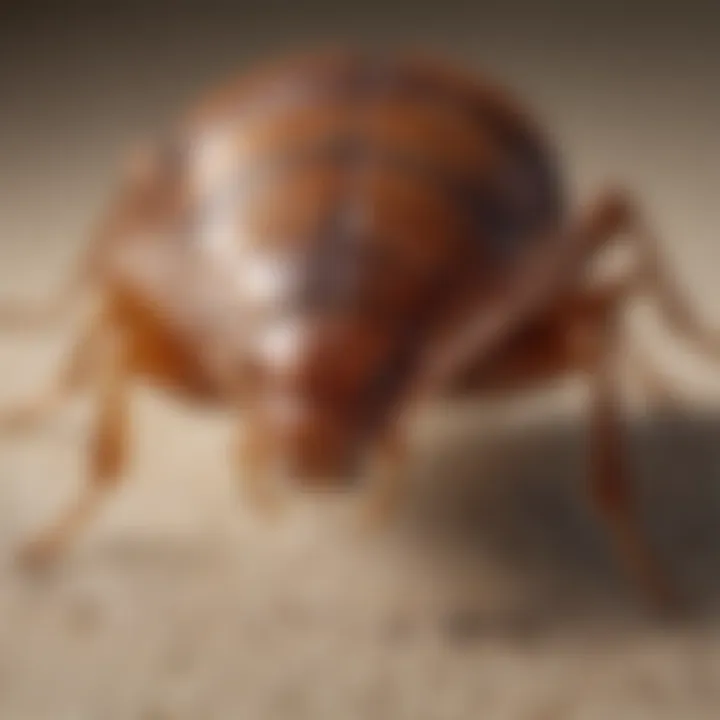
Intro
Understanding how to manage bed bugs is essential for both immediate relief and long-term prevention. With the rise in reported cases, it is vital to equip oneself with knowledge about bed bug behavior, ideal conditions for survival, and various repellents available today.
Understanding the Pest
Identification
Identifying bed bugs is crucial for any effective treatment. Adult bed bugs are approximately 4 to 5 millimeters in length, resembling small, reddish-brown seeds. They are often mistaken for other pests, which can delay the necessary interventions.
Eggs are tiny, about 1 millimeter long, and have a pearly-white color. They are often laid in clusters, making them somewhat easier to spot.
Common signs of bed bug infestations include:
- Dark spots on bedding or furniture, which can be fecal matter.
- Shed exoskeletons from growing bed bugs.
- Small, itchy bites on the skin that appear in a linear pattern.
Life Cycle
Understanding the life cycle of bed bugs can greatly enhance control efforts. Bed bugs undergo five nymphal stages before reaching adulthood. Each stage requires a blood meal for development.
- Egg: A female can lay up to 500 eggs in her lifetime.
- Nymph: They grow into smaller versions of adults. This stage can last for weeks, depending on environmental conditions.
- Adult: Mature bed bugs can live up to one year if not removed from their environment and can reproduce rapidly.
Recognizing the signs associated with different life stages can improve efforts towards eliminating them.
Pest Prevention Strategies
Environment Modification
Preventing bed bugs requires careful attention to the environment. Some strategies include:
- Decluttering: Reducing clutter makes it harder for bed bugs to hide.
- Regular Cleaning: Frequent vacuuming and washing of linens can help to remove any eggs or adult bugs.
- Sealing Cracks: Filling gaps and cracks in walls and furniture can minimize hiding places.
Physical Barriers
Using physical barriers is an effective way to deter bed bugs.
- Bed Bug Mattress Covers: These provide a protective layer to prevent bed bugs from entering your mattress.
- Bed Legs: Elevating beds on bed bug interceptors can significantly reduce contact with floors, which can harbor bugs.
These methods can create an inhospitable environment for bed bugs, reducing the risk of infestation.
Control Methods
Chemical Control
Chemical repellents remain a popular choice. Products containing pyrethroids and neonicotinoids are common in many commercial insecticides. Users should follow instructions carefully to ensure safety and efficacy. Common applications include:
- Sprays: Use directly on infested areas, such as mattresses and furniture.
- Dusts: Applied to cracks and crevices where bed bugs may hide.
"Effective use of chemical repellents should balance efficacy and safety for users."
Biological Control
Alternative methods, often less harmful to the environment, include biological control strategies. This involves using natural predators or insect pathogens to manage bed bug populations. While this method is not as widely used, it is gaining interest as a sustainable method of pest management.
Understanding Bed Bugs
Understanding bed bugs is crucial for anyone seeking effective measures against these persistent pests. Bed bugs are more than just a nuisance; they pose potential threats to health and well-being. Having clear knowledge about their biology and behavior assists homeowners and pest control professionals in forming effective strategies for prevention and eradication. The relevance of comprehending bed bugs extends beyond mere identification; it also informs the selection and utilization of appropriate repellents.
Biology and Behavior of Bed Bugs
Bed bugs, scientifically known as Cimex lectularius, are small, wingless insects that typically feed on human blood. They have an oval shape, are reddish-brown in color, and measure about 4 to 5 millimeters in length. One critical aspect of their biology is their ability to reproduce quickly under favorable conditions. A female bed bug can lay up to five eggs a day, leading to a significant population increase in just a few weeks.
These insects are primarily nocturnal, meaning they are most active at night. They tend to hide in cracks and crevices during the day, making them hard to detect. Common hiding spots include mattress seams, bed frames, and baseboards. Their feeding occurs when a host is sleeping, often leaving small bite marks that can cause discomfort and provoke allergic reactions in some individuals.
Understanding the biology of bed bugs is the first step in effective prevention and control methods.
Signs of Bed Bug Infestation


Recognizing the signs of a bed bug infestation is essential for timely action. Here are some of the most common indicators:
- Bite Marks: Small, red, itchy spots often found on exposed skin areas can indicate bed bug bites. They tend to appear in a line or cluster.
- Blood Stains: Tiny blood stains on sheets or mattresses can result from crushed bed bugs or feeding.
- Fecal Spots: Dark brown or black spots on bedding or furniture are droppings left by bed bugs, a clear signal of their presence.
- Eggs and Skins: Bed bugs leave behind eggs, which are tiny, white, and oval-shaped, and their shed skins after molting, both indicative of an infestation.
Immediate action upon detecting these signs is critical to prevent further spread and ensure effective treatment. This understanding establishes a foundation for why the use of bed bug repellents becomes a necessary consideration in any pest management strategy.
The Importance of Repellents
The use of bed bug repellents can not be overstated when tackling the menace of these persistent pests. Repellents serve as a frontline defense, deterring bed bugs from infesting homes and spaces where people live. This is particularly relevant for house owners and housewives, who often face the brunt of a bed bug problem. Not only do these products aim to protect individuals, but they also contribute to the overall management of pest populations, making their role even more significant.
Why Use Bed Bug Repellents?
Bed bug repellents play a crucial role in a comprehensive pest management strategy. They offer numerous benefits that make them an essential investment for households. First, the mere act of applying a repellent can provide peace of mind. It creates a barrier that makes infested areas less appealing to these insects.
Moreover, repellents can reduce the need for more aggressive pest control measures, such as extermination efforts that can be costly and invasive. Regular use of repellents allows individuals to keep potential infestations at bay and minimizes the risk of bed bugs entering their living spaces. Enhanced protection fosters a healthier environment, reducing the likelihood of dealing with the stress and discomfort that comes from bed bug bites.
However, one must also be aware of the limitations that come with their use.
Limitations of Repellents
While bed bug repellents provide essential benefits, their effectiveness is not universal. Several limitations exist that homeowners must consider. One primary concern is that repellents often do not kill bed bugs; they can only deter them. This means that if an infestation has already taken root, relying solely on repellents might not suffice to solve the issue.
Additionally, the effectiveness of repellents can vary based on their active ingredients. For example, some chemicals might have stronger repelling properties than others, potentially leading to mixed results. Also, resistance can develop over time; bed bugs exposed to certain repellents might adapt, reducing their efficacy altogether.
Furthermore, environmental and health considerations play a role in choosing repellents. Some might contain chemicals that individuals wish to avoid for safety or ecological reasons.
"Using bed bug repellents is just one part of a larger strategy needed to effectively deal with these pests."
Types of Bed Bug Repellents
Understanding the different types of bed bug repellents is crucial for effective pest management. The right type can greatly influence the success of repelling these insects. Factors like ingredients, mode of action, availability, and safety should guide your choice. Selecting the appropriate repellent can protect your living space and ensure peace of mind.
Chemical Repellents
Chemical repellents are traditionally used due to their effectiveness and swift action. Products containing pyrethroids are common. These chemicals disrupt the nervous system of bed bugs, causing paralysis and death. They tend to have a residual effect, providing protection even after the initial application. However, over time, many bed bugs have developed resistance to these substances, making it imperative to rotate products.
Some widely known brands in this category include Raid, Ortho, and Hot Shot. When using chemical repellents, following the manufacturer's instructions is critical. Ensure adequate ventilation during application. Always be cautious if there are pets or young children at home, as these chemicals can pose health risks.
Natural and Organic Repellents
With a rising interest in eco-friendly living, natural and organic repellents have gained popularity. These repellents often utilize plant-based ingredients, making them safer for human and environmental health. Diatomaceous earth, for example, is a fine powder that can effectively dehydrate bed bugs upon contact.
Another natural alternative is cedar oil, which not only repels insects but also provides a pleasing aroma to the environment. Other options like neem oil or garlic extract can also serve as effective repellents. While these options are less harmful, their effectiveness may not match that of synthetic chemicals. Regular reapplication is necessary to maintain deterrence against bed bugs.
Essential Oils as Repellents
Essential oils offer a fragrant, yet effective approach to repelling bed bugs. Oils such as lavender, peppermint, and tea tree oil have shown repellent properties. These oils can be mixed with a carrier oil or water and sprayed in areas likely to be infested, like beds and furniture. They not only repel pests but also can improve the overall scent of the home.
"Essential oils can serve as a delightful alternative, combining aroma therapy with pest control."
Although essential oils are generally safer than chemical options, they may require frequent applications to maintain effectiveness, since their scent can dissipate quickly. It’s essential to test a small area first, ensuring that there is no damage to fabrics or surfaces.
Active Ingredients in Repellents
Understanding the active ingredients in bed bug repellents is crucial for effective pest management. When selecting a repellent, it is important to recognize what components contribute to its success. Key ingredients not only provide the means to deter these pests but also have varying degrees of efficacy based on their formulation. Knowledge about these ingredients can empower housewives and homeowners to make informed choices for their living environments.
Pyrethroids and Their Effectiveness
Pyrethroids are synthetic chemicals modeled after pyrethrins, which are naturally occurring compounds found in chrysanthemum flowers. These compounds are widely used in many insect repellents due to their neurotoxic effects on insects, including bed bugs.
One advantage of pyrethroids is their fast-acting nature. They disrupt the normal functioning of an insect's nervous system, often leading to immediate death upon contact. This effectiveness makes pyrethroids a popular choice among many commercial repellent products. However, it is important to note that bed bugs have developed varying levels of resistance to certain pyrethroids over time. This means that while these ingredients may work well in some situations, their efficacy can diminish in heavy infestations.
Additionally, users should be aware of potential health concerns associated with pyrethroids. Although they are considered safe for household use when applied correctly, excessive exposure may lead to respiratory issues or skin irritation in sensitive individuals.
DEET: Pros and Cons
DEET, or N,N-diethyl-meta-toluamide, is one of the most widely used active ingredients in insect repellents. Initially developed by the U.S. military for protection against biting insects, DEET has become a staple in various products available today.
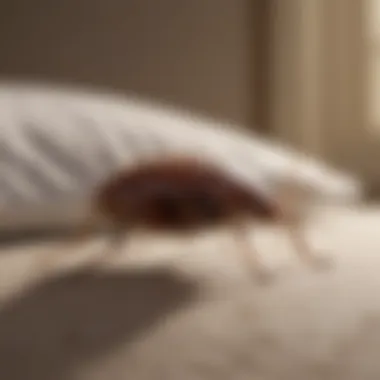
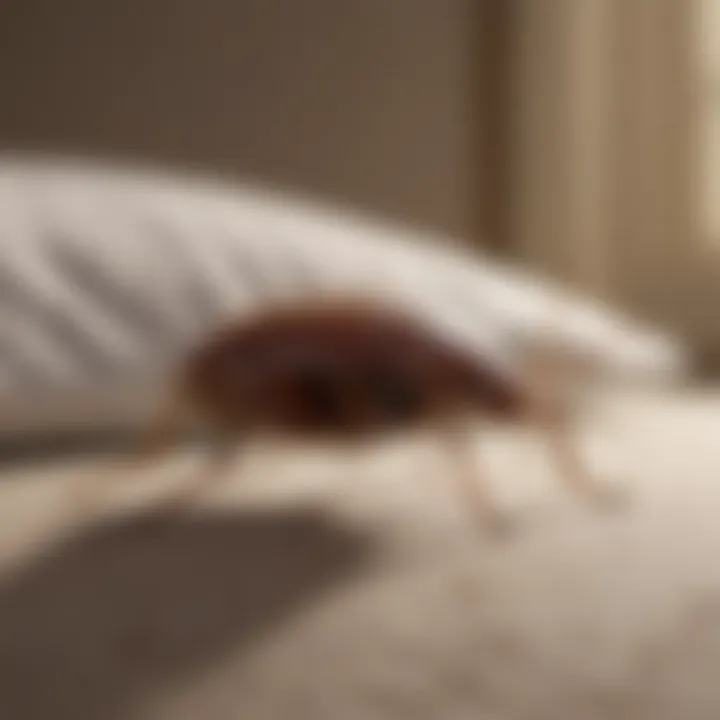
Some advantages of DEET include its long-lasting protection. It can provide hours of effective defense against bed bugs and other pests. Many users find that formulations with DEET are versatile, as they work against a range of insect species. Furthermore, DEET can be used effectively on both exposed skin and clothing, which makes it a convenient option for comprehensive coverage.
However, there are drawbacks to consider. Some individuals report skin irritation or allergic reactions when using DEET-based products. Its strong odor can also be off-putting for some users. In addition, while DEET is effective against many insects, there are indications that its effectiveness can wane against bed bugs specifically. As such, it is wise for homeowners to combine its use with other preventative measures.
Insecticidal Soaps
Insecticidal soaps are another category of active ingredients found in certain bed bug repellents. These soaps contain fatty acids that disrupt the cell membranes of insects, leading to dehydration and death. They work primarily by contact, making them useful in targeted applications.
One significant benefit of insecticidal soaps is their low toxicity to humans and pets. This characteristic makes them an appealing option for households with children or animals. Additionally, since these soaps break down quickly in the environment, they are often regarded as eco-friendly alternatives.
Despite these advantages, insecticidal soaps have limitations. They require direct contact with the insect to be effective, which can be challenging in hiding spots favored by bed bugs. Furthermore, users should be cautious about their application on certain plant materials, as insecticidal soaps can cause phytotoxicity.
"Selecting the right active ingredient is critical to the efficacy of your bed bug management strategy."
Overall, understanding the active ingredients in repellents equips individuals with the knowledge necessary to combat bed bug infestations. Making informed choices about which products to use can lead to better results in pest control efforts.
Application Methods
Understanding the application methods for bed bug repellents is crucial for both effectiveness and safety. The way a repellent is applied can influence its performance in deterring these pests. Each method has its unique benefits and considerations that homeowners need to understand.
Sprays and Aerosols
Spray application is a common method for using bed bug repellents. It allows for targeted coverage of infested areas, such as bed frames, mattresses, and baseboards. The main advantage of using sprays is their immediate effect. As soon as they are applied, the active ingredients can rapidly repel or kill bed bugs on contact.
However, there are important factors to consider. Users must ensure they shake the canister well before applying it. This ensures an even distribution of the product. Moreover, sprays may require reapplication after some time since they can break down due to exposure to air and light. Always read the label to understand the frequency of reapplication recommended by the manufacturer.
"Effective treatment of bed bugs often requires a comprehensive approach, including regular reapplication of repellents."
Powders and Granules
Powders and granules serve as another effective method for repelling bed bugs. These products can be sprinkled in areas where bed bugs are likely to hide. This includes places such as behind headboards, under carpets, and in cracks or crevices. Their benefit lies in their prolonged effectiveness. Powders can remain effective longer than sprays, as they do not evaporate as quickly.
One notable advantage of powders is their more controlled application. Homeowners can apply them in hard-to-reach areas with precision. However, caution is necessary to avoid inhalation during application. Using a mask can help mitigate this risk. Overall, powders may offer a more long-term solution when combined with other methods.
Heat Treatments
Heat treatments represent a non-chemical method for repelling bed bugs. This method involves raising the temperature in an infested room to levels that are lethal to bed bugs.
The advantage of using heat is that it can kill bed bugs at all stages of their life cycle, including eggs. It's an efficient method that can be combined with other treatments for better results. However, the limitations include that heat treatments may require specialized equipment. Not all homeowners might have access to this technology.
Safety is a key consideration as well. Care must be taken to avoid damage to belongings when applying heat. Homeowners should ensure that items sensitive to heat, such as electronics, are removed prior.
Through understanding the application methods, homeowners can make informed decisions regarding the use of bed bug repellents.
Evaluating Efficacy
Evaluating the efficacy of bed bug repellents is essential for anyone concerned about these pests. Choosing the right repellent can mean the difference between a serene living space and an ongoing battle with bed bugs. This section highlights effective strategies to evaluate repellents, focusing on research studies, user experiences, and key considerations when assessing their effectiveness.
Research Studies on Repellent Effectiveness
Research studies provide invaluable insights into how effective bed bug repellents can be. Scientific investigations often evaluate various products under controlled conditions, examining their active ingredients, formulations, and application methods. Through these studies, consumers can understand which chemical components or natural ingredients consistently deter bed bugs.
For example, a study published in a pest management journal might analyze the effectiveness of common active ingredients such as Pyrethroids or DEET. By measuring outcomes like the longevity of resistance and the time it takes for bed bugs to return to treated areas, researchers offer empirical data that guides product choices for a home environment.
Factors such as the concentration of active ingredients, environmental conditions, and application methods play pivotal roles in the findings of these studies. Thus, reviewing peer-reviewed articles enhances the decision-making process when selecting a bed bug repellent.
User Reviews and Testimonials
User reviews and testimonials serve as a rich source of information on the practicality of bed bug repellents. Homeowners and tenants often share their experiences regarding the effectiveness of products they have used. These narratives can be invaluable for gauging the real-world efficacy of repellents, beyond what is claimed by manufacturers.
Potential buyers should look for trends in user feedback. Are there consistent mentions of a product working well or failing? What specific conditions do users cite as influencing effectiveness? While individual experiences can vary, looking for patterns in user reviews provides a glimpse into a product’s true performance.
Considerations before relying solely on user feedback:
- Sample Size: Look for products with a substantial number of reviews.
- Recency: Ensure the reviews are recent to reflect current formulations.
- Diverse Experiences: A range of experiences can indicate a product’s robustness or weaknesses.
"Understanding the scientific background and real-life testimonials can empower consumers to make informed choices regarding bed bug repellents."
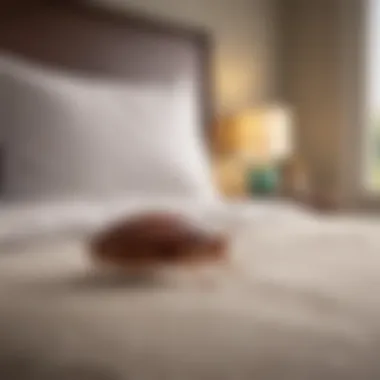
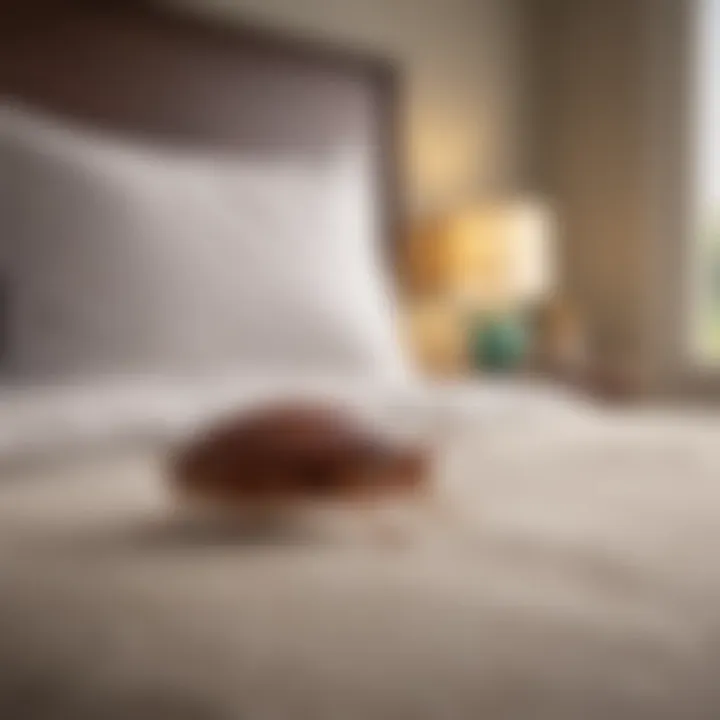
Evaluating efficacy is vital for ensuring a pest-free home while also considering cost-effectiveness and environmental impact. Balancing these factors with informed choices will yield better outcomes in the fight against bed bugs.
Preventative Measures
Preventative measures are essential in reducing the risk of bed bug infestations in homes. The importance of these measures cannot be overstated. They offer a proactive approach that not only minimizes the chances of a bed bug bite but also creates a less favorable environment for their survival. Understanding and implementing effective prevention strategies can save homeowners time, money, and stress in the long run.
Regular Inspections
Regular inspections are the cornerstone of effective bed bug prevention. Homeowners should routinely check high-risk areas such as beds, furniture, and baseboards for any signs of bed bugs. This includes looking for small, reddish-brown spots, which can indicate bed bug feces, or identifying shed exoskeletons as they mature. Early detection is crucial; the sooner a potential problem is identified, the easier it is to manage it.
To maintain vigilance, consider scheduling inspections at least once a month. This can include moving furniture slightly to examine hidden crevices, inspecting linens, and checking behind frames or pictures. It is a good practice to encourage family members to be aware and report any unusual signs. Consistency is key—make inspections a routine part of home maintenance.
Creating Uninhabitable Conditions
To keep bed bugs at bay, creating inhospitable environments is very effective. Bed bugs thrive in cluttered or unkempt areas, so a tidy living space can discourage their presence. This means decluttering frequently and ensuring that bedding, clothing, and other fabric items are kept clean and stored properly.
One practical step is to reduce the amount of fabric in your home. For instance, using softer materials for curtains and avoiding excessive pillow collections can help to lower hiding places for bed bugs.
Below are some additional measures to enhance your home environment against bed bugs:
- Seal cracks and crevices around baseboards and flooring.
- Use a protective cover on mattresses and pillows that are specifically designed to prevent bed bug penetration.
- Vacuum regularly, especially in areas prone to bed bug hiding spots.
- Wash and dry clothing on high heat, especially after traveling or when purchasing second-hand items.
Implementing these preventative measures ensures that your home remains as unwelcoming as possible for bed bugs, making it difficult for them to establish an infestation. Utilizing a combination of regular inspections and creating inhospitable conditions will greatly enhance a homeowner's capability to prevent unwanted guests.
Eco-friendly Alternatives
The use of eco-friendly alternatives in pest control is becoming increasingly vital as consumers seek methods that are effective yet safe for the environment. This section explores options that minimize ecological impact while addressing the persistent issue of bed bugs. Eco-friendly alternatives prioritize the safety of humans and pets over chemical exposure. This is essential not only for health reasons but also for sustaining biodiversity in urban and rural areas.
Biological Control Methods
Biological control methods involve the introduction of natural predators to manage bed bug populations. For instance, certain species of predatory insects, such as the Harpactorinae family, target bed bugs without harming other insects. This approach promotes a natural balance and reduces reliance on chemical pesticides.
Benefits of biological control include:
- Sustainability: Natural predators can reproduce and continue to control bed bug populations long-term.
- Safety: Minimizes risks associated with chemical exposure.
However, there are considerations. Biological methods might take longer to show results. The effectiveness of introducing predators closely depends on the initial infestation level.
Non-toxic Home Remedies
Non-toxic home remedies are practical solutions that can be utilized to deter bed bugs without resorting to chemicals. Common effective methods include
- Diatomaceous Earth: This powdery substance acts by dehydrating bed bugs. It is safe for humans and pets when used properly.
- Boric Acid: Though it is technically a pesticide, when used as directed, boric acid poses fewer risks compared to traditional pesticides.
- Lavender Oil: Bed bugs have been shown to be repelled by certain essential oils like lavender. A solution can be made by mixing a few drops of lavender oil with water in a spray bottle.
Using non-toxic remedies encourages a holistic approach. However, effectiveness may vary based on the severity of the infestation, demanding persistence from the user.
In summary, the movement towards eco-friendly alternatives in bed bug management demonstrates a shift in consumer priorities, prompting consideration of safety and sustainability. Not only do these methods protect the environment, but they also create a safer living space for families.
When to Seek Professional Help
Dealing with a bed bug infestation is a challenging experience. While there are various repellents and methods for managing these pests, sometimes it becomes necessary to consider professional assistance. Knowing when to seek help is crucial in effectively addressing the issue.
Professional pest control services bring expertise and specialized knowledge to the situation. These professionals are trained to identify the extent of an infestation and are equipped to handle the problem safely and effectively. They often have access to tools and chemicals that are not available to the general public, which can enhance the process of elimination.
Additionally, hiring professionals can save you time and reduce stress. They know the most efficient methods for treatment, allowing for quicker resolution compared to DIY approaches. In many instances, attempting to handle significant infestations alone can lead to more complications, including the potential for further spreading of the pests.
Indicators of Severe Infestation
Recognizing the signs of a severe infestation is critical. Here are some key indicators:
- Frequent Bites: If you or others in your household are experiencing multiple bites, especially in a pattern (usually in rows), it could signify a significant bed bug presence.
- Live Bugs or Shells: Seeing live bed bugs or finding their shed skins in bedding or furniture indicates that the problem is growing.
- Fecal Stains: Dark spots on bedding, furniture, or walls are characteristic fecal matter left behind by bed bugs. A large number of these stains can illustrate a serious issue.
- Musty Odor: A strong, unpleasant scent in the bedroom may point to excessive bed bug activity. This odor stems from chemicals the bugs produce.
- Difficulties in Sleep: Increased anxiety and discomfort while trying to sleep could result from the fear of being bitten, leading to a decline in overall well-being.
If these indicators are observed, it is advisable to contact a pest control professional. Timely intervention can prevent the infestation from reaching a critical level, saving time, money, and peace of mind.
Ending
The conclusion of this article is vital as it synthesizes the information gathered throughout the discussion on bed bug repellents. It reiterates the various key elements and their respective benefits while also considering practical aspects. Understanding the essentials of effective bed bug repellents enhances decision-making for households and property owners.
Summary of Effective Repellents
In summary, effective repellents serve as the first line of defense against bed bug infestations. Here are several key takeaways:
- Types of Repellents: The article clarifies the diverse types of repellents available, which are chemical, natural, and those based on essential oils.
- Active Ingredients: Knowledge of active ingredients like pyrethroids, DEET, and insecticidal soaps is crucial. Each has a unique method of operating and varying degrees of effectiveness against bed bugs.
- Application Methods: Proper application methods, including sprays, powders, and heat treatments, significantly determine the success rate of a repellent.
- Efficacy and Research: Insights from research studies and user testimonials support the effectiveness of certain products, enabling informed choices.
- Preventative Care: Understanding how to create uninhabitable conditions for bed bugs can act as a supplemental strategy alongside repellents.
- Eco-friendly Options: The focus on biological control methods and non-toxic home remedies reflects a growing consciousness about the environment and safety in pest management.
These elements underscore the comprehensive nature of bed bug management. Homeowners are encouraged to balance efficacy with environmental consideration when selecting a repellent. Staying informed not only enhances personal comfort but also contributes to broader pest control strategies.







